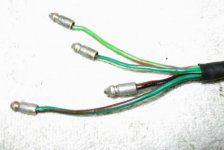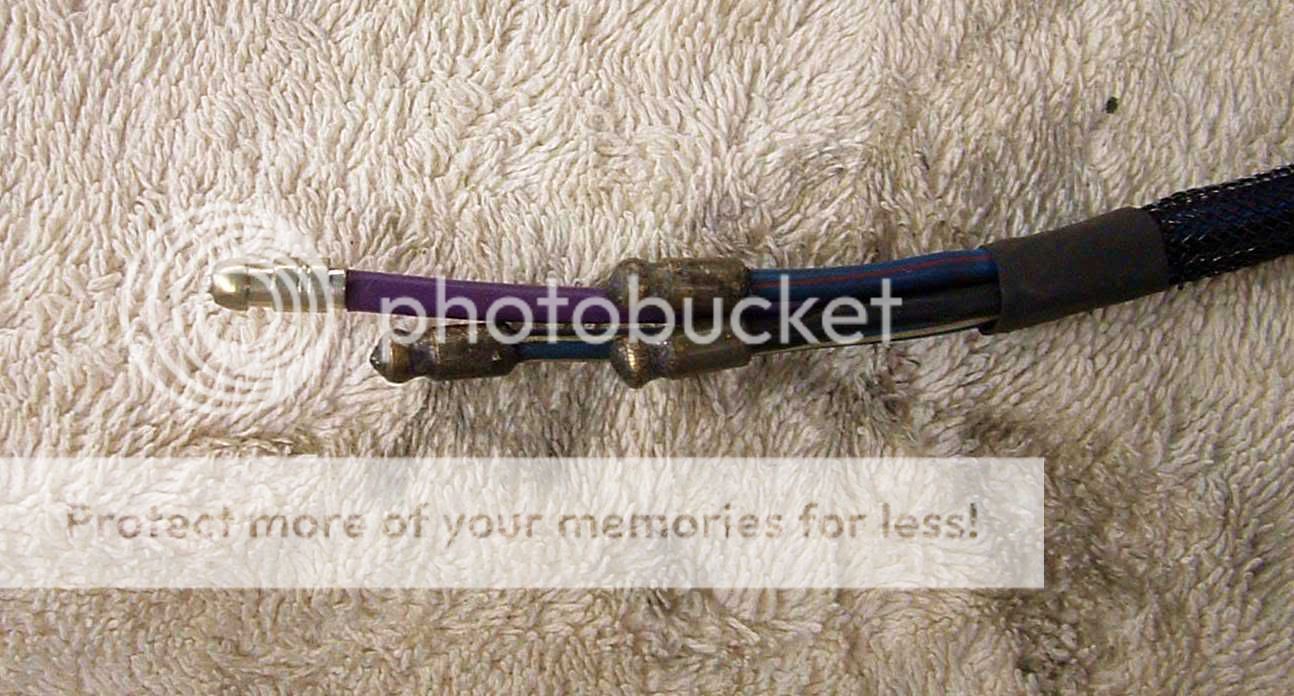There were two types - solder-on and later crimp-on bayonet conectors. All the bayonets on my 1958 TR3A (TS 27489 LO - very close to your TR) are the solder-on type. If yours are soldered onto the ends of the stranded wires, all you have to is heat up the tip of your hand soldering iron, wet the tip of the iron by melting a bit of solder using a heated iron and a touch on rosin-core fluxed wire solder (63/37) marked on the roll = 63% tin and 37% lead. Then hold the tip of the iron at the bullet nose end of the bayonet connector and the solder will melt. Pull off the bayonet with long nose pliers, dress up the stranded wires or clip off about 1/16" from the end for a clean finish. Then reinsert the stranded wire with the vinyl removed back to the open big end of the bayonet. Insert the starnded wire. If it won't go in and you can't see it in the small hole at the front "bullet end", heat up the bare bayonet holding it with your long-nose pliers. When you see that the solder has all melted, rap it on the work bench and the remaining liquid solder will fly out - careful - it will be hot above 361 degrees F and it will be liquid so it might splash around a bit. You don't want any solder to land on your hand, arm or face. Also don't wear any synthetic shirts etc. because molten solder will melt the synthetic material and it will all fuse to your skin and no-one enjoys that happening.
Now you have reinserted the stranded wire into the big end of the bayonet and you can see the tip of the strands coming up through the tiny hole at the bullet end. Or at least you can see the stranded end just below - looking down the tiny hole.
Hold it securely (don't crush it) in a vice and using your hot soldering iron tip and some fresh rosin-core 63/37 wire solder, re-solder the tip of the bayonet. The solder will melt on the bullet tip end of the bayonet and will run down inside the tiny hole by capillary action - then move the soldering tip away and let the wire, connector and hot solder cool till it is solidly soldered before you remove it from the vice.
Now you have most of the story about soldered bayonet ends for your TR standed wires.
If the soldring iron does nothing as the first step, your connectors are probably the crimped-on type. I don't know anything about these.
Below is a photo of the staggered solder-on bayonets you will find at the bottom end of the steering column. These connectors were soldered on in 1958.

 Hey there Guest!
Hey there Guest!
 smilie in place of the real @
smilie in place of the real @
 Pretty Please - add it to our Events forum(s) and add to the calendar! >>
Pretty Please - add it to our Events forum(s) and add to the calendar! >> 


 )
)  A friendly reminder - be careful what links you click on here. If a link is posted by someone you don't know, or the URL looks fishy, DON'T CLICK. Spammers sometimes post links that lead to sites that can infect your computer, so be mindful what you click.
A friendly reminder - be careful what links you click on here. If a link is posted by someone you don't know, or the URL looks fishy, DON'T CLICK. Spammers sometimes post links that lead to sites that can infect your computer, so be mindful what you click.